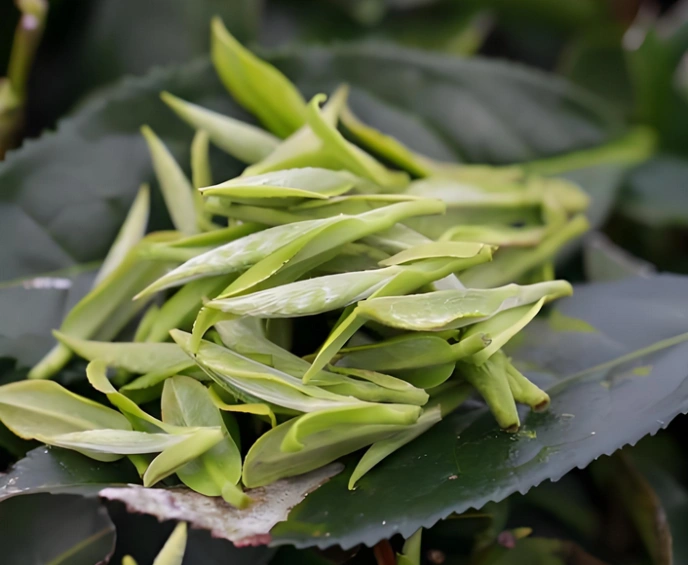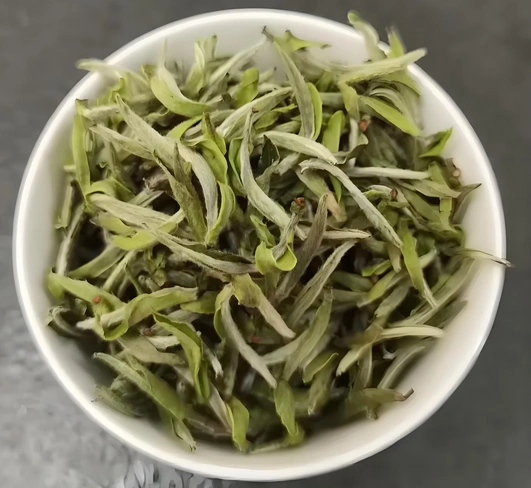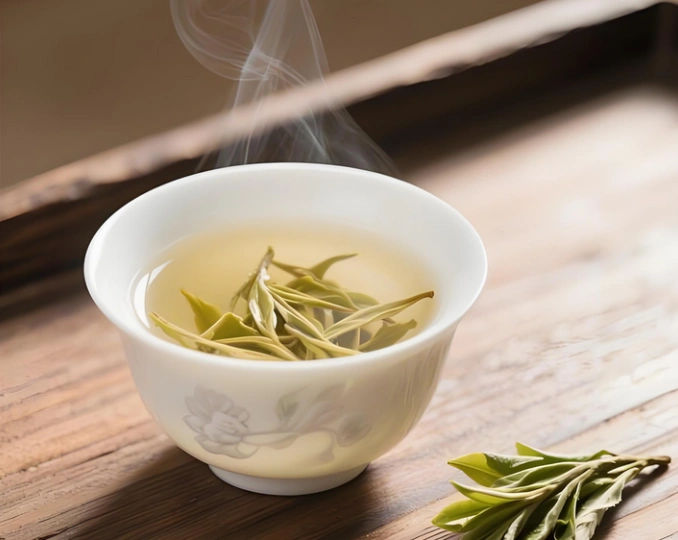white tea for stress relief is more than a soothing phrase—it’s a gentle, aromatic ritual that helps melt away tension and nourish your mind. With its delicate florals, light caffeine, and calming amino acids, white tea offers a sensorial escape from modern life’s pressures. Whether you’re an office worker battling deadlines, a meditator seeking deeper calm, or a yogi tuning into body and breath, this guide will show you how to harness white tea’s stress‑relieving powers.
We’ll explore the science behind its calming effects, daily rituals, mindful moments for meditation sessions, yoga‑friendly brews, and expert tips to maximize relaxation. Ready to brew tranquility? Let’s steep.
1. Why White Tea Calms the Mind
White tea, harvested from early buds of Camellia sinensis and minimally processed, retains higher levels of L‑theanine—a unique amino acid linked to relaxation and focus. Unlike coffee’s jittery spike, white tea’s modest caffeine (15–35 mg per cup) combined with L‑theanine promotes alpha brain waves, associated with calm alertness. A study in Biological Psychology found L‑theanine reduces cortisol, the stress hormone, improving mood and cognitive performance (Juneja et al., 1999; link). With each sip of white tea for stress relief, you invite a wave of serenity into your day.

2. The Science of Stress Relief in White Tea
2.1 L‑Theanine and Cortisol Reduction
L‑theanine crosses the blood–brain barrier, boosting GABA and dopamine—neurotransmitters that quell anxiety. Research shows regular consumption lowers cortisol levels by up to 20% during stressful tasks.
2.2 Antioxidants for Mental Well‑Being
White tea’s catechins and polyphenols combat oxidative stress, which contributes to mental fatigue and mood imbalances. A 2015 Journal of Agricultural and Food Chemistry study found white tea retains over 80% of its antioxidant activity after digestion, supporting overall brain health (Stalmach et al., 2015; link).
3. Daily Rituals: White Tea for Office Workers
For busy professionals, white tea for office workers offers quick stress relief between meetings. Keep a delicate blend like Silver Needle or Shou Mei at your desk:
- Mid-Morning Pause: At 10 AM, step away from screens and steep a cup. Inhale the soft aroma, close your eyes, and sip slowly to reset.
- Afternoon Soothe: Replace your second coffee with white tea to avoid an evening crash yet maintain focus.
- Micro‑Meditations: Use your tea break as a brief mindfulness practice—focus on the warmth in your palms and the gentle flavors unfolding on your tongue.
These micro‑rituals cultivate calm and productivity throughout your workday.

4. Mindful Moments: Tea for Meditation Sessions
During white tea for meditation sessions, the brew becomes part of your practice:
- Preparation as Practice: Boil water and measure leaves mindfully. Notice the silvery buds and earthy scent.
- Steeping Silence: Let your cup steep for 3–4 minutes in silence. Focus on the sound of water dripping, the steam rising.
- Sipping with Awareness: Take three slow sips, noting flavor, temperature, and texture. Let each sensation anchor you in the present.
Integrating tea into meditation deepens self‑awareness and heightens the calm‑alert state.
5. Flow and Focus: White Tea for Yoga Practice
Before or after white tea for yoga practice, enjoy a gentle infusion to align mind and body:
- Pre‑Flow Energizer: A light cup 30 minutes before your session primes focus without racing heart.
- Post‑Flow Restoration: Sip warm tea after finishing your asanas to soothe muscles and continue relaxation off the mat.
Choose a light brew like White Peony (Bai Mudan) or Gong Mei for a balanced flavor that harmonizes with your practice.
6. Brewing for Bliss: Tips to Maximize Relaxation
6.1 Water Temperature & Steep Time
- Heat to 175–185°F (80–85°C)—too hot water scorches delicate leaves and creates bitterness.
- Steep 3–5 minutes. Shorter steeps yield subtle aroma; longer infusions deepen flavor and L‑theanine release.
6.2 Leaf Quality & Multiple Infusions
Opt for whole‑leaf teas like Silver Needle for maximum L‑theanine. Re‑infuse leaves 2–3 times—each steep reveals new nuances and extends your calming ritual.

🔗 To learn more about how to make tea, check out Tanbiwencha’s YouTube video explaining how to make tea.
7. Sensory Comfort: Aroma, Taste & Atmosphere
Create a sanctuary around your tea:
- Aroma: Infuse with a drop of lavender or a sprig of mint.
- Taste: Pair with a square of dark chocolate or a few almonds to anchor and enhance flavors.
- Atmosphere: Light a candle, play soft instrumental music, or gaze out a window to complement your sip‑session.
By engaging multiple senses, you amplify white tea’s stress‑relieving effects.
8. FAQs: Your White Tea Stress Relief Questions
Q1: How much white tea for stress relief per day?
Aim for 3–5 cups, spaced throughout the morning and afternoon.
Q2: Can I drink white tea before bed?
Yes—its low caffeine and high L‑theanine gently ease you into a restful state.
Q3: Which variety is best?
For maximum calm, choose high‑bud teas like Silver Needle or premium blends labeled “stress relief” or “mindful sip.”
9. Conclusion & Next Steps: Cultivate Calm Daily
Embrace white tea for stress relief as your daily sanctuary. From quick office reprieves to mindful meditation sips and yoga‑aligned brews, this gentle tea transforms stress into serenity. Stock your pantry with premium loose leaves white tea, master your brewing ritual, and craft sensory‑rich moments that nourish both mind and body. One cup at a time, you’ll weave calm into every corner of your life—cheers to your most peaceful self.



